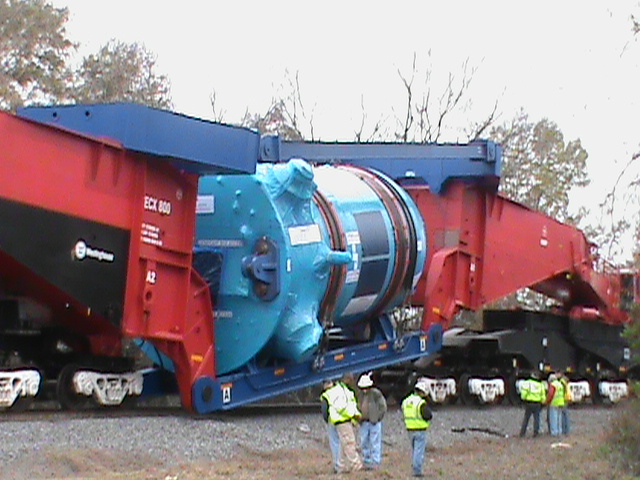“The platform that contained the RV (reactor vessel) during transport became misaligned with the Schnabel railcar, so the railcar stopped immediately,” Georgia Power Co. spokesman Mark Williams told the Augusta Chronicle. “The platform and car were realigned the same day and safely returned to the port.” The malfunction occurred less than a mile from the port of Savannah. There was no damage to the reactor vessel or to the Schnabel car.
The nuclear component was bound from Savannah to Plant Vogtle, a two-unit nuclear power plant near Waynesboro, Ga. The plant is undergoing a $14 billion expansion that involves building two new reactors. The steel vessel was built in South Korea and took three years to complete.
A Schnabel car is designed to carry heavy and oversized loads in such a way that the load itself makes up part of the car. The load is suspended between the two ends of the cars by lifting arms; the lifting arms are connected to a pivot above an assembly of pivots and frames that carry the weight of the load and the lifting arm. Some Schnabel cars include hydraulic equipment that will either lift or horizontally shift the load while in transit (at low speeds) to clear obstructions along the car’s route. The word Schnabel is from the German Tragschnabelwagen, meaning “carrying-beak-wagon,” because of the tapered shape of the lifting arms that resemble a bird’s beak. The first cars of the type were built in Germany.














